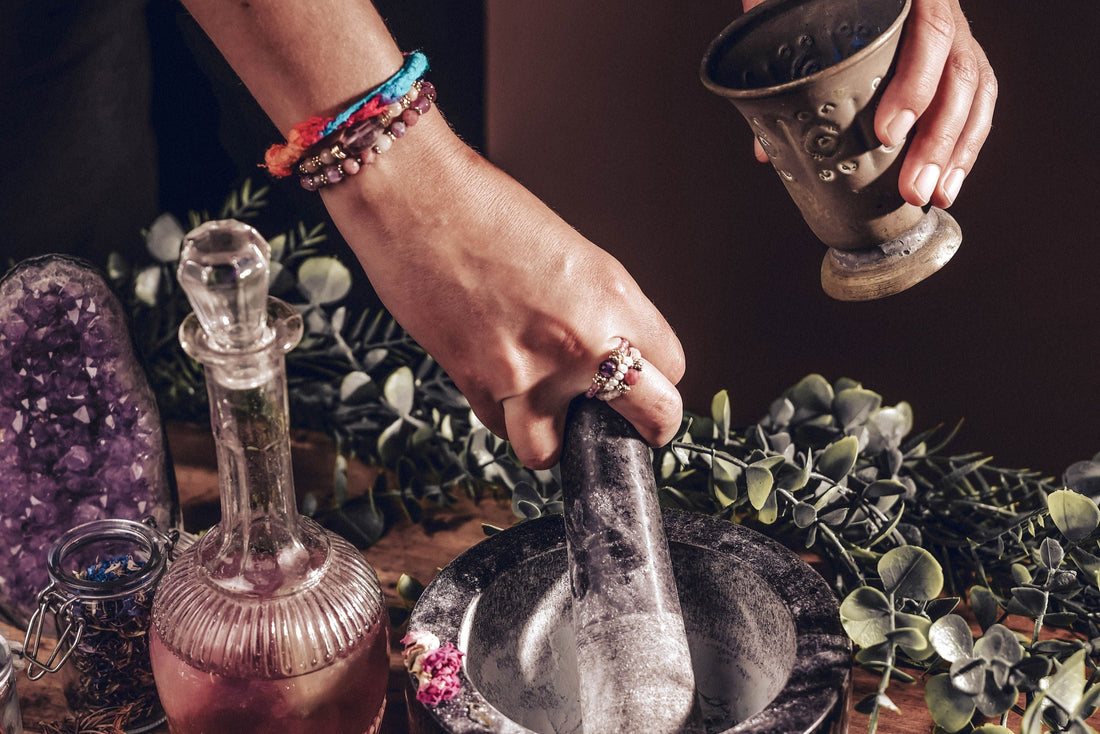
Natural Pigment Painting: The Ultimate Guide to Earth-Based Art
Share
Natural Pigment Painting: The Ultimate Guide to Earth-Based Art
By Daniela Hunter
What is Natural Pigment Painting?
Natural pigment painting is an ancient and eco-friendly art form that uses color extracted from the earth: Minerals, rocks, plants, flowers, clay, and other elements, to create soulful, sustainable artwork. These pigments are often hand-ground and mixed with natural binders to create paints for canvas, paper, or walls.
This practice dates back over 100,000 years, from Paleolithic cave art in France to the frescoes of ancient Egypt. Today, artists are rediscovering this sacred, slow process as a way to align their creativity with the Earth.
Why Use Natural Pigments?
Using natural pigments isn’t just a trend — it’s a revolution in how we create. Here’s why more artists are switching to natural pigment painting:
-
🌿 Non-toxic & safe – no harmful VOCs or industrial chemicals
-
🌍 Eco-conscious – sustainably sourced and biodegradable
-
🎨 Rich, earthy tones – colors like ochre, sienna, and indigo hold depth and soul
-
🧘♀️ Spiritually grounding – connects you to the land and elements
-
✨ Symbolic – each pigment carries ancestral, cultural, and alchemical meaning
“Natural pigments don’t just look alive, they are alive.”
Where to Find Natural Pigments
You can source natural pigments in two main ways:
1. Harvest Your Own
-
Mineral pigments like red ochre, yellow ochre, and green earth can be collected from clay beds, rock faces, or hillsides.
-
Plant pigments like indigo (blue), turmeric (yellow), beetroot (pink), or walnut hulls (brown) can be extracted through boiling and soaking.
⚠️ Always harvest responsibly and follow local laws when foraging.
2. Buy Pre-Ground Natural Pigments
Here are some reputable sources:
-
Natural Pigments
-
Kremer Pigmente
-
Earth Pigments
-
Greenleaf & Blueberry
How to Make Natural Paint
You only need three ingredients: pigment + binder + solvent.
🧪 Basic Recipe:
-
Grind pigment using a mortar and pestle until it’s a fine powder.
-
Add a few drops of binder (see next section).
-
Add water (or oil) to form a smooth paste.
-
Mix well using a muller or palette knife on a glass surface.
Binders: What to Mix with Natural Pigments
Natural pigments need a binder to stick to your surface. Choose based on the style of painting:
| Binder | Best for | Notes |
|---|---|---|
| Gum Arabic | Watercolor, ink | Translucent, glossy finish |
| Egg Yolk (Tempera) | Panel painting | Ancient method, fast drying |
| Linseed Oil | Oil painting | Slower drying, richer tones |
| Casein (Milk Protein) | Wall painting, tempera | Matte finish, fast drying |
| Flour Paste or Starch | Children’s art, eco-crafts | Vegan and safe |
Tips for Painting with Natural Pigments
-
Use textured, absorbent paper or gessoed wood panels.
-
Layer gently — natural paints are more delicate than synthetics.
-
Experiment slowly — each pigment has a different personality.
-
Label your mixtures — keep notes of each pigment’s behavior.
-
Seal your painting if needed, with natural varnish or beeswax polish.
Symbolism & Spirit of Natural Colors
Every natural pigment has a story — a history, an emotion, a vibration:
| Pigment | Source | Symbolism |
|---|---|---|
| Red Ochre | Iron-rich clay | Life force, protection, blood memory |
| Indigo | Indigofera plant | Intuition, mysticism, depth |
| Malachite | Copper mineral | Heart chakra, transformation |
| Yellow Ochre | Earthy clay | Sunlight, confidence, divine clarity |
| Charcoal | Burnt wood | Death, rebirth, void, mystery |
Painting with natural pigments becomes a form of ritual. You are not just making art — you are alchemizing the elements.
Natural Pigment Painting vs. Synthetic Paints
| Natural Pigments | Synthetic Paints |
|---|---|
| Biodegradable, non-toxic | Often contain heavy metals, microplastics |
| Handmade, small-batch | Mass-produced in factories |
| Soulful, earthy tones | Uniform, bright, less nuance |
| Slow, intentional process | Fast, convenient |
| Supports ecological awareness | Often relies on fossil fuels and chemicals |
FAQs About Natural Pigment Painting
Is natural pigment painting archival?
Yes, many natural pigments like ochre, umber, and indigo have lasted for millennia. Proper sealing and storage increase longevity.
Can I sell natural pigment art professionally?
Absolutely. Many galleries love the story and sustainability behind natural pigments. It's a unique selling point.
Are natural pigments safe for kids?
Most are, especially plant-based ones, but always research each pigment. Avoid minerals with heavy metals (e.g., cinnabar/mercury).
Final Thoughts: Reconnect with Earth Through Your Art
Natural pigment painting is more than a technique — it’s a spiritual return to the Earth. Every stroke is alive with history, ritual, and respect for the natural world. In a time of digital overstimulation, this slow art practice invites us to pause, gather, and remember that nature is the original palette.
